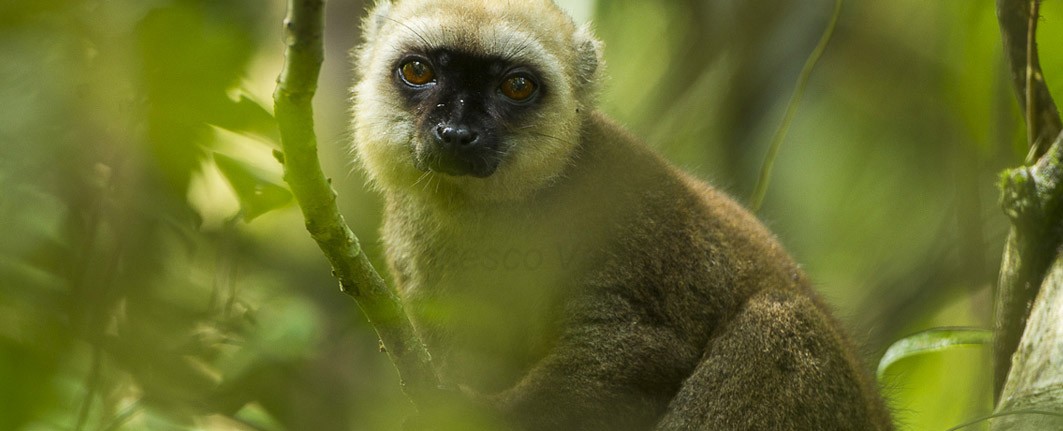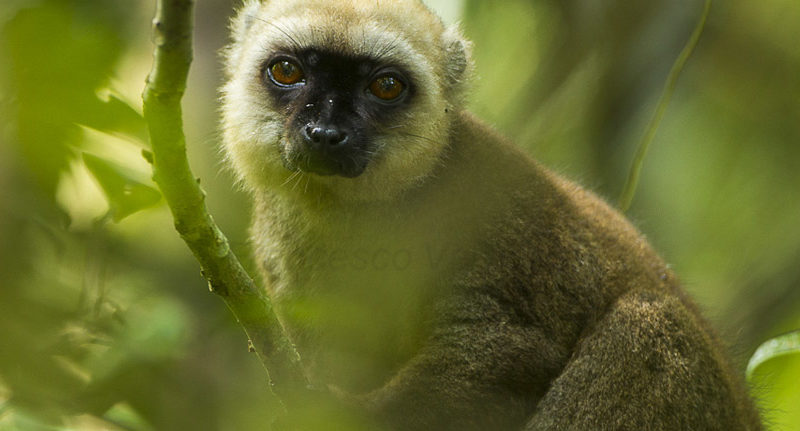
White-fronted Brown Lemur: A Complete Guide to Madagascar’s Iconic Lemur
The White-fronted Brown Lemur (Eulemur albifrons) is one of Madagascar’s most captivating primates. Known for its striking male coloration and social behavior, this lemur species attracts wildlife enthusiasts and researchers alike. In this guide, we explore its habitat, behavior, diet, and where to see White-fronted Brown Lemurs in the wild.
What is a White-fronted Brown Lemur?
The White-fronted Lemur is a medium-sized lemur belonging to the Eulemur genus, part of the ‘true lemur’ family. Unique among lemurs, males and females display obviously different coloration: males have a distinctive white forehead and face, while females are generally drabber.
Physical Characteristics
-
Size: Medium, weighing 2–3 kg
-
Coloration: Males have white faces; females are brownish-grey
-
Eyes: Large, reflective eyes adapted for diurnal and occasional nocturnal activity
Their striking appearance makes them the easiest brown lemur species to spot during wildlife tours in Madagascar.
Habitat and Distribution of White-fronted Brown Lemurs
The White-fronted Lemur is primarily found in the northeastern rainforests of Madagascar, with a distribution focused around Maroantsetra.
Key habitats include:
-
Masoala National Park
-
Marojejy National Park
-
Nosy Mangabe
These lemurs thrive in dense rainforest, often forming social groups for protection and foraging.
Behavior and Social Structure
The White-fronted Lemur is highly social and typically seen in groups. Their behavior closely resembles Sanford’s Brown Lemur, including vocal communication, territorial displays, and group foraging.
Social Behavior Highlights
-
Diurnal and nocturnal activity: Active mostly during the day, but can forage at night
-
Vocal communication: Calls are similar to other brown lemur species, aiding in group cohesion
-
Group dynamics: Usually travel in small to medium-sized social groups
Diet of White-fronted Brown Lemurs
White-fronted Lemurs are primarily frugivorous, meaning fruit makes up the bulk of their diet. However, they are opportunistic feeders and may also consume:
-
Leaves and flowers
-
Small insects or invertebrates
-
Tree bark or seeds
This varied diet ensures survival even when fruit availability is low, which is common in Madagascar’s seasonal forests.
Where to See White-fronted Brown Lemurs
For wildlife enthusiasts, spotting a White-fronted Lemur in the wild is a highlight of any Madagascar tour. They are fairly common in:
-
Nosy Mangabe: Excellent for guided wildlife walks
-
Masoala National Park: Dense rainforest provides ideal viewing
-
Marojejy National Park: Popular among trekking tours
These locations offer some of the best chances to observe their natural behaviors in undisturbed habitats.
Conservation Status
While not currently listed as critically endangered, White-fronted face threats from habitat destruction and deforestation. Conservation efforts in protected areas like Masoala and Marojejy are crucial to preserving their populations.
Why You Should Observe White-fronted Brown Lemurs
-
Unique coloration: Males’ white faces are iconic and photogenic
-
Social behavior: Their group dynamics offer fascinating behavioral observations
-
Accessibility: They are among the more visible lemur species in northeastern Madagascar
Observing them supports local conservation initiatives while giving visitors a memorable wildlife experience.
HT AGENCY TOURS
Luxury Madagascar with the best luxury African safari tours packages. Discover your next perfect destination with HT Agency Tours

